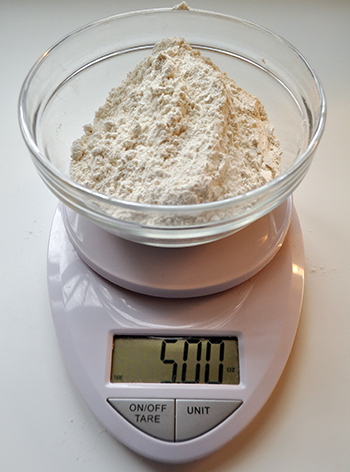Baking Tips
Return to Heath and Nutrition Agent Articles
 Baking requires precision and attention to detail to be successful. Guessing on measurements and fudging ingredients usually won’t fly in baking. But, the following tips will help you get started:
Baking requires precision and attention to detail to be successful. Guessing on measurements and fudging ingredients usually won’t fly in baking. But, the following tips will help you get started:
Starting tips
- Always wash hands and countertops before starting.
- Read the recipe from top to bottom. Sometimes it’s helpful to write down how long each step will take.
- Use the right tools:
- Pour liquids (water, oil, milk, honey, corn syrup) in a clear liquid measuring cup (with a spout) placed on the countertop. Stoop down to read the amount at eye level on the counter; don’t raise the cup to your eye level
- Use standard dry measuring cups (little bowls with handles) for dry ingredients (flours, sugar, cocoa, brown sugar, cornmeal)
- Large eggs are the standard used in home baking.
- Be sure to use butter or hard stick margarine (read the package label), not a spread or reduced- fat product. Vegetable oils (sunflower, soybean, corn, olive, safflower) are usually specified in a recipe. Your product may not be successful substituting oil for butter or margarine.
- Sifting is needed only if the recipe specifies to pre-sift a dry ingredient before measuring.
- Avoid measuring ingredients over the mixing bowl; you might accidentally over measure and add too much of one ingredient.
- Place pans in the oven so they do not touch each other or the oven sides. Do not place pans on racks directly below or above another pan. It’s better to stagger them.
- Measure flour correctly. Do not pack flour into a measuring cup like you would when measuring brown sugar. A better technique is to spoon flour into a measuring cup creating a mound that can be leveled off with a straight edge. Be sure to fluff the flour before scooping.
- But the best way to measure flour is with a scale.
- 1 cup equals 5-ounces.
- Use the correct flour:
- Use bread flour to make bread. This flour is milled from a hard wheat and has more gluten, the elastic substance that develops when flour gets wet and is manipulated by kneading, beating or stirring. This will help give bread its structure.
- Use cake flour for cakes. This flour is milled from soft wheat, and has less gluten so products like cakes and pastries will be more tender.
- Don’t have either flour? Use all-purpose. It’s a blend of both hard and soft wheat and is a good, general flour for all baking recipes.
- Use the correct leavening agent. Baking powder and baking soda may sound the same, but they are NOT the same.
- Make sure the oven is preheated to the correct temperature. An oven thermometer is very helpful here.
- Avoid opening the oven to check on your product. Use the oven light instead.
- And remember, practice makes perfect.
Sources:
- http://www.homebaking.org/familyfun/TenTipsforBakingSuccesswithKids.pdf
- https://www.extension.iastate.edu/sites/www.extension.iastate.edu/files/guthrie/ExtCon091504.pdf
- https://www.bookstore.ksre.ksu.edu/pubs/4H488.pdf
- https://extension.usu.edu/foodsense/cook/baking
Ingredient substitutions
Don’t have an ingredient on hand? Here is a handy list of substitutions by the University of Nebraska at Lincoln.
Want more great food tips, recipes and nutrition info?
Sign up to receive In Good Health each month in your email inbox.